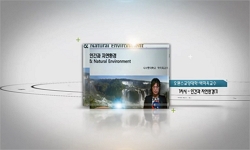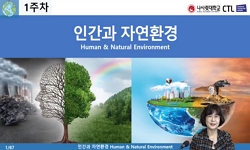This study has researched the national expansion, dispersion of nutria and investigated its inhabitation status for the past 3 years. The report has shown that the number of nutria habitat, reported to be distributed in 9 cities or districts in 2010,...
http://chineseinput.net/에서 pinyin(병음)방식으로 중국어를 변환할 수 있습니다.
변환된 중국어를 복사하여 사용하시면 됩니다.
- 中文 을 입력하시려면 zhongwen을 입력하시고 space를누르시면됩니다.
- 北京 을 입력하시려면 beijing을 입력하시고 space를 누르시면 됩니다.

뉴트리아 (Myocastor coypus)의 국내 분포 및 서식 현황에 관한 연구 = The Study on the Distribution and Inhabiting Status of Nutria (Myocastor coypus) in Korea
한글로보기https://www.riss.kr/link?id=A104898125
- 저자
- 발행기관
- 학술지명
- 권호사항
-
발행연도
2013
-
작성언어
Korean
-
주제어
NAKDONG RIVER ; INVASIVE ALIEN SPECIES ; HABITAT TRACE ; DENSITY ; WETLAND ; 낙동강 ; 침입외래종 ; 흔적지점 ; 밀도 ; 습지
-
등재정보
KCI등재
-
자료형태
학술저널
- 발행기관 URL
-
수록면
316-326(11쪽)
-
KCI 피인용횟수
5
- 제공처
-
0
상세조회 -
0
다운로드
부가정보
다국어 초록 (Multilingual Abstract)
This study has researched the national expansion, dispersion of nutria and investigated its inhabitation status for the past 3 years. The report has shown that the number of nutria habitat, reported to be distributed in 9 cities or districts in 2010, has been increased to 13 in 2012. In the research of 629 nutria habitats, 95.9% of habitat traces were found in Busan-Kyungnam area. From the research of relative density by location type for the 6 survey areas in these 5 areas above, it was shown 3.98(±2.56)ind./100m in 2010, 2.90(±2.69)ind./100m in 2011 and 1.39(±0.66)ind./100m in 2012. From the research of relative density by habitat types, it was shown 3.48(±2.15)ind./100m in palustrine wetland area, 1.01±(0.25)ind./100m in river area and 3.69±(2.83) ind./100m in riverine wetland area. It was shown that the annual average density in the areas has slightly been decreased for the past 3 years between 2010 and 2012. It also reported that the habitat density in the river area is a bit lower than that in the wetland area. Currently it can be determined that the nutria has fully adapted themselves to the various local environments of wetland, river, stream, and so on in Korea and the Relative density could be remarkably increased especially in the favorable condition like a wetland. As the ones living in the area with over-density could be spread out to other areas, the efficient management plan to control should be prepared considering ecological conditions.
국문 초록 (Abstract)
본 연구에서는 3년간(2010~2012년) 뉴트리아의 전국적인 확산과 분포 흐름을 확인하고 서식 현황을 조사하였다. 2010년 9개 시⋅군에 분포하는 것으로 파악된 뉴트리아는 2012년 조사 결과, 13개 ...
본 연구에서는 3년간(2010~2012년) 뉴트리아의 전국적인 확산과 분포 흐름을 확인하고 서식 현황을 조사하였다. 2010년 9개 시⋅군에 분포하는 것으로 파악된 뉴트리아는 2012년 조사 결과, 13개 시⋅군에서 서식하는 것으로 나타났으며, 뉴트리아의 서식 흔적 조사에서 확인된 629개의 지점 중 95.9%의 흔적지점이 부산⋅경남지역을 중심으로 확인되었다. 부산⋅경남지역의 5개 행정구역 내 위치한 6개 조사구역을 서식지 유형별로 구분하여 개체 밀도를 조사한 결과, 2010년 3.89(±2.56)개체/100m, 2011년 2.90(±2.69)개체/100m, 2012년 1.39(±0.66)개체/100m의 개체 밀도를 확인하였다. 조사기간 동안의 서식지 유형별 평균 개체밀도는, 소택형 습지 조사지역 3.48(±2.15)개체/100m, 하천 조사지역 1.01(±0.25)개체/100m, 하천형 습지 조사지역 3.69(±2.83)개체/100m로 나타났다. 2010년부터 2012년까지 3년간 조사구역의 연간 평균 개체 밀도는 매년 감소하는 경향을 보였으며, 하천이 습지에 비해 뉴트리아 평균 개체 밀도가 낮게 나타났다. 현재 뉴트리아는 국내의 습지, 하천, 강 등 다양한 환경에 적응하여 서식하고 있으며 특히, 습지와 같이 서식에 유리한 환경이 조성된 지역에서는 급속한 밀도의 증가를 보일 수 있다. 과밀 지역에 서식하는 뉴트리아는 타 지역으로의 확산 가능성을 지니고 있으므로 생태적인 특성을 적용한 효율적인 관리방안의 수립이 필요하다.
참고문헌 (Reference)
1 Nowak, R. M., "Walker's mammals of world. 6th Ed" Johns hopkins University press 1936-, 1999
2 Gosling, L. M., "The twenty-four hour active cycle captive coypus (Myocastor coypus)" 187 : 341-367, 1979
3 Adams, W. H., "The nutria in coastal Louisiana" 14 : 28-41, 1956
4 Corbert, G.B., "The mammals of huddling: test of a psycho- physiological hypothesis" 65 : 256-262, 1978
5 Taylor, K. L., "The interactive effects of herbivory and fire on an oligohaline marsh Little Lake, Louisiana, USA" 14 : 82-87, 1994
6 Wentz, W. A., "The impact of nutria (Myocastor coypus) on marsh vegetation in the Willamette Valley, Oregon" Oregon State University 1971
7 Haramis, M., "The effect of nutria (Myocastor coypus) on marsh loss in the lower eastern shore of Maryland: an exclosure study"
8 Bergamon, D.L., "The economic impact of invasive species to wildlife services cooperator. Human Conflicts with Wildlife; Economic Considerations" 2000
9 Gosling, L. M, "The coypus in East Anglia" 23 : 49-59, 1974
10 Kim, P., "The coypu (Myocastor coypus) in the Netherlands: reproduction, home range and manner of seeking food" 23 : 55-64, 1980
1 Nowak, R. M., "Walker's mammals of world. 6th Ed" Johns hopkins University press 1936-, 1999
2 Gosling, L. M., "The twenty-four hour active cycle captive coypus (Myocastor coypus)" 187 : 341-367, 1979
3 Adams, W. H., "The nutria in coastal Louisiana" 14 : 28-41, 1956
4 Corbert, G.B., "The mammals of huddling: test of a psycho- physiological hypothesis" 65 : 256-262, 1978
5 Taylor, K. L., "The interactive effects of herbivory and fire on an oligohaline marsh Little Lake, Louisiana, USA" 14 : 82-87, 1994
6 Wentz, W. A., "The impact of nutria (Myocastor coypus) on marsh vegetation in the Willamette Valley, Oregon" Oregon State University 1971
7 Haramis, M., "The effect of nutria (Myocastor coypus) on marsh loss in the lower eastern shore of Maryland: an exclosure study"
8 Bergamon, D.L., "The economic impact of invasive species to wildlife services cooperator. Human Conflicts with Wildlife; Economic Considerations" 2000
9 Gosling, L. M, "The coypus in East Anglia" 23 : 49-59, 1974
10 Kim, P., "The coypu (Myocastor coypus) in the Netherlands: reproduction, home range and manner of seeking food" 23 : 55-64, 1980
11 Mitchell-Jones, A. J., "The atlas of European, In The atlas of European mammals" Academic Press 484-, 1999
12 Kanwanich, S., "The arguments for and against breeding nutrias: Bangkok post Perspective, 8 February 1998 Bangkok, Thailand"
13 Hall, E. R., "The Mammals of North America. Second Edition" John Wiley and Sons 601-1181, 1981
14 SPSS Institute, "SPSS version 20.0"
15 Doncaster, C.P., "Response by coypu to catastrophic events of cold and flooding" 13 : 98-104, 1990
16 Wilner, G. R., "Reproduction, physiological responses, food habit, and abundance of nutria on Maryland marshes" Wildlife Monographs 65-, 1979
17 Bailey, J.W., "Range and states of the nutria, Myocastor coypus, in Arkansas" Academy of Science 25-27, 1978
18 Gosling, L.M., "Planning and monitoring an attempt to eradicate coypus from Britain" 100-113, 1987
19 Kuhn, L.W., "Oregon's nutria problem" 6 : 101-105, 1974
20 Warkentin, J. M, "Observations on the behaviour and ecology of nutria in Louisiana" 15 : 10-17, 1968
21 Bounds, D. L, "Nutria: an invasive species of national concern" 12 : 9-16, 2000
22 Wilner, G.R., "Nutria: Myocastor coypus. Pages. 1059-1076 in Wildmammals of North America" The Johns Hopkins University Press 1147-, 1076
23 LeBlanc, D. J., "Nutria. Prevention and Control of Wildlife Damage. S.E. Hygnstrom, R.M. Timm, and G.E. Larsen" University of Nebraska-Lincoln press 71-80, 1994
24 Aliev, F. F, "Numerical changes and the population structure of the coypu (Myocastor coypus) in different countries" 15 : 238-242, 1966
25 Wood, C. A., "Myocastor coypus" 398 : 1-8, 1992
26 Murphy, W. J., "Molecular phylogenetics and the origin oh placental mammals" 409 : 614-618, 2001
27 Cabrera, A., "Mamiferos Sud-Americanos (vida, costumbres descripcion)"
28 Atwood, E. L., "Life history studies of nutria, or coypu, in coastal Louisiana" 14 (14): 249-265, 1950
29 Abbas, A., "Impact du ragondin (Myocastor coypus Molina) sur une culture de mais (Zea mays L.) dans le marais Poitevin" 9 (9): 173-189, 1988
30 D' adamo, P., "Habitat use by Myocastor coypus in agro-systems of the Argentinean Pampas" 45 : 25-33, 2000
31 Peloquin, A. W., "Growth and reproduction of the feral nutria (Myocastor coypus) near Corvallis, Oregon" Oregon State University 1969
32 Abbas, A., "Feeding strategy of coypu (Myocastor coypus) in central Western France" 224 : 385-401, 1991
33 Ministry of Environment(ME), "Environmental statistics yearbook 2010" Ministry of Environment 709-, 2010
34 Boumans, R.M., "Effects of two Louisiana marsh management plant on water and materials flux and short-term sedimentation" 14 : 247-261, 1994
35 Lee, D. H., "Ecological characteristics for sustainable management of nutria (Myocastor coypus) in Korea"
36 Sutherland, W. J., "Ecological census techniques" Blackwell Science 432-, 2004
37 Brown, L.N., "Ecological Relationships and breeding biology of the nutria (Myocastor coypus) in the Tampa, Florida area" 56 : 928-930, 1975
38 Miura, S., "Disporsal of nutria in Okayama Prefecture" 6 : 231-237, 1976
39 Borgnia, M., "Diet of the coypu (Nutria, Myocastor coypus) in agro- systems of Argentinean Pampas" 64 (64): 409-416, 2000
40 Francesca, M., "Coypu (Myocastor coypu ) in a Mediterranean remnant wetland: a pilot study of a year cycle with management implications" 19 : 159-164, 2011
41 Aliev, F. F, "Contribution to the study of nutria-migrations (Myocastor coypus)" 16 : 301-303, 1968
42 Bourdelle, E., "American mammals introduced into France in the contemporary period, especially Myocastor and Ondatra" 20 : 287-291, 1939
43 Woods, C.A., "Adaptive radiation of Capromyid rodents: Anatomy of the masticatory apparatus" 60 : 95-116, 1979
44 Bar-Han, A., "Adaptations to hypercapnic conditions in the nutria (Myocastor coypus) - in vivo and in vitro CO2 titration curves" 75 : 603-608, 1983
45 Norris, J. D, "A campaign against feral coypus (Myocastor coypus molina) in Great Britain" 4 : 191-199, 1967
46 National Institute of Environmental Research(NIER), "A Study of detailed survey on invasive alien species in Korea and designation of invasive alien species in foreign countries" National Institute of Environmental Research Press 408-, 2006
동일학술지(권/호) 다른 논문
-
용문사 계곡 소나무림의 식물군집구조 및 22년간(1988~2010년) 변화 분석
- 한국환경생태학회
- 장재훈
- 2013
- KCI등재
-
- 한국환경생태학회
- 김진석
- 2013
- KCI등재
-
- 한국환경생태학회
- 김지석
- 2013
- KCI등재
-
자연환경 기반형 관광·휴양목적지 시설물에 대한 방문객 공간인지도 분석 - 남이섬 관광지 사례를 중심으로 -
- 한국환경생태학회
- 최영석
- 2013
- KCI등재
분석정보
인용정보 인용지수 설명보기
학술지 이력
| 연월일 | 이력구분 | 이력상세 | 등재구분 |
|---|---|---|---|
| 2026 | 평가예정 | 재인증평가 신청대상 (재인증) | |
| 2020-01-01 | 평가 | 등재학술지 유지 (재인증) |  |
| 2017-01-01 | 평가 | 등재학술지 유지 (계속평가) |  |
| 2013-01-01 | 평가 | 등재학술지 유지 (등재유지) |  |
| 2010-01-01 | 평가 | 등재학술지 유지 (등재유지) |  |
| 2008-01-01 | 평가 | 등재학술지 유지 (등재유지) |  |
| 2005-01-01 | 평가 | 등재학술지 선정 (등재후보2차) |  |
| 2004-01-01 | 평가 | 등재후보 1차 PASS (등재후보1차) |  |
| 2003-01-01 | 평가 | 등재후보학술지 유지 (등재후보1차) |  |
| 2002-01-01 | 평가 | 등재후보학술지 유지 (등재후보1차) |  |
| 2000-07-01 | 평가 | 등재후보학술지 선정 (신규평가) |  |
학술지 인용정보
| 기준연도 | WOS-KCI 통합IF(2년) | KCIF(2년) | KCIF(3년) |
|---|---|---|---|
| 2016 | 0.61 | 0.61 | 0.64 |
| KCIF(4년) | KCIF(5년) | 중심성지수(3년) | 즉시성지수 |
| 0.66 | 0.68 | 0.773 | 0.19 |




 ScienceON
ScienceON 코리아스칼라
코리아스칼라






